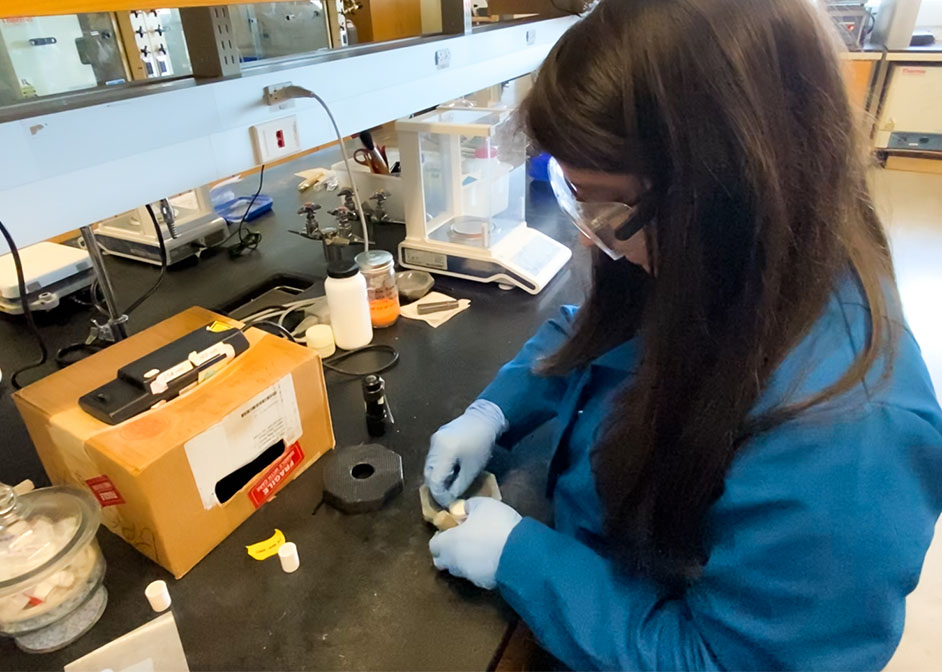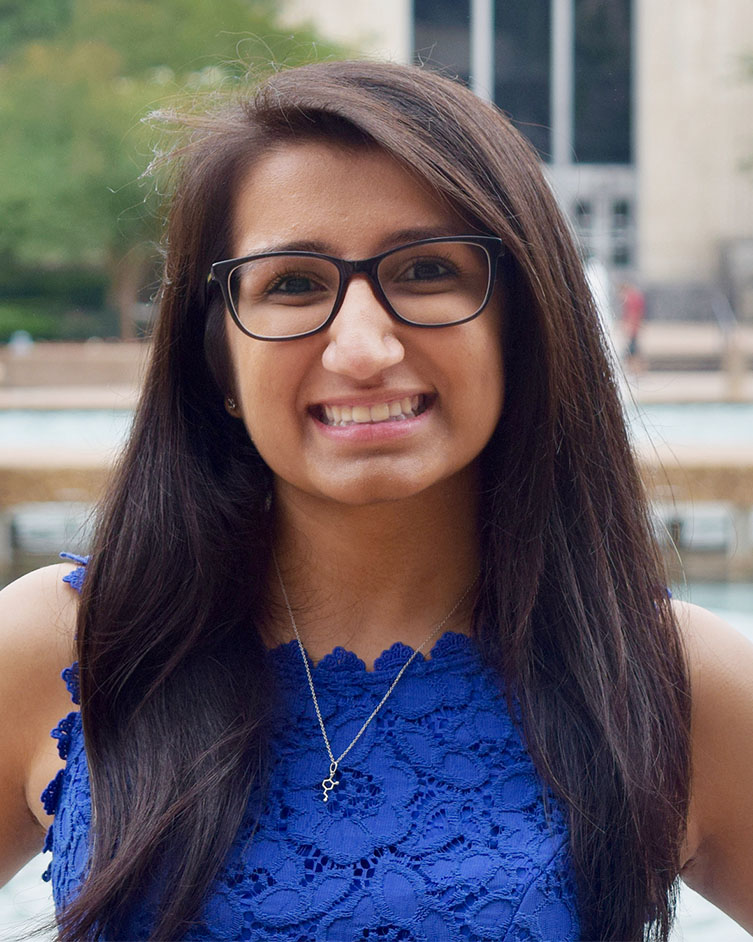Ph.D. Student Shruti Hariyani Helps Develop Human-Centric Lightbulb
“When I first started here, what really hooked me was seeing everything glow.”

Shruti Hariyani is a University of Houston doctoral student in associate professor of chemistry Jakoah Brgoch’s lab. The glow she refers to is from luminescent materials called phosphors that emit bright light in different colors, blue, green or red, when exposed to high energy light.
Hariyani studies the structure and optical properties of phosphors, particularly those used with light-emitting diode lights, or LEDs.
Before modern lightbulbs, incandescent bulbs were used to illuminate spaces. They were followed by the development of fluorescent lightbulbs, which are commonly used in offices and laboratories. But now, people are moving to energy-efficient LED-based lightbulbs.
“Those bulbs work by using an LED and a phosphor that sits on top of the LED,” Hariyani said. “Those phosphors glow whenever they’re exposed to the LED light. If you think about glow-in-the-dark stars, those have phosphors in them. It’s the same mechanism that produces light in those that works hand in hand in an LED lightbulb.”
In Brgoch’s lab at UH’s College of Natural Sciences and Mathematics, she works on creating new phosphors that can go inside LED lightbulbs to create more energy efficient lighting.
Her work became a published study in the American Chemical Society’s journal Applied Materials and Interfaces. She was the first author of the 2021 publication.
It outlines how she and Brgoch are developing a prototype LED lightbulb that uses a violet LED, which emits light in the safer violet segment of the visible light spectrum. This is opposed to traditional LED lightbulbs, which utilize a blue LED and expose humans to more harmful blue light.
“It’s a huge real-world application,” Hariyani said. “Any time we make a new material, we want to push our characterization of it as much as possible.” With their lightbulb prototype, Hariyani and Brgoch can share with companies what they can expect on a larger scale.

“Shruti’s projects have been outstandingly successful,” Brgoch said. “She continually strives to provide clear scientific communication in each paper, ensuring that our research is valuable across the community. She is making a tremendous impact at UH.”
Their goal for their lightbulb is to make it as energy efficient and cheap as possible while simultaneously reducing blue light exposure, eventually making new lighting technology marketable to consumers. Hariyani is excited about the possible change she could create in the world.
"If I can work hard and honestly get a little bit lucky, then I could potentially stumble across material that really could make a difference,” she said. “It definitely motivates you to keep going on some of the days that are a little harder.”
Award-winning Work
Hariyani and Brgoch’s work has also been awarded by the journal Chemistry of Materials and the American Chemical Society Division of Inorganic Chemistry. The duo received the 2021 Chemistry of Materials Lectureship and Best Paper Award for their published study that exemplifies the power of using computation and experiment to gain a deeper understanding of how local distortions can impact a material’s properties.
"It is a little surreal, not going to lie,” Hariyani said. “All I know is that I showed up every day in the lab. It is a very cool thing to be honored, especially for a project that was so insanely difficult at that time.”
Hariyani owes the award to her hard work and the help of her group mates and boss.
Two-Fold Desire to Continue Work at UH
Before embarking on her graduate school journey, Shruti completed her undergraduate degree at UH. Her family lives in Sugar Land. Because they live less than an hour away, she was able to rely on them as a support system.
Not only did she want to stay close to family, but she really loved Brgoch’s class. She and her two best friends were considering research when they were undergraduates and wanted to try lab work in Brgoch’s group. Lucky for them, he took them under his wing.
“I feel like in those two years I worked for him as an undergrad, we established an ideal working relationship,” she said. “I couldn’t imagine having a better boss or more supportive person to guide me through a Ph.D.”
Likewise, Brgoch said Hariyani continuously shows how resilient and determined she is when challenges arise.
“Science is full of failure,” he said, “but the best graduate students learn something new from every experiment and keep moving forward. I believe this is the hallmark of a great scientist and an attribute that sets Shruti apart.”
Hariyani plans to pursue a career in science after completing her Ph.D.
"I know I want to keep doing science,” she said. “I want to keep doing research. Whatever avenue I end up doing it in, I just know I want to keep doing this.”
- Rebeca Trejo, College of Natural Sciences and Mathematics